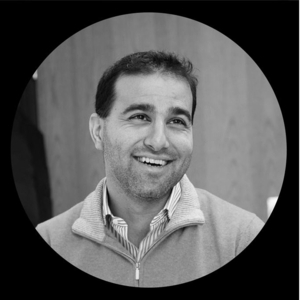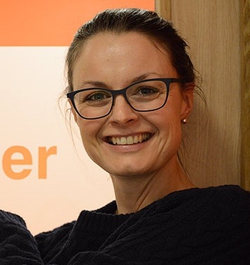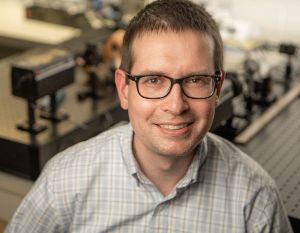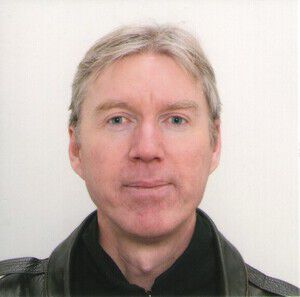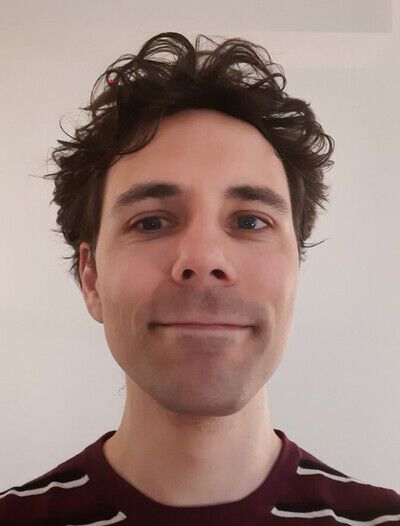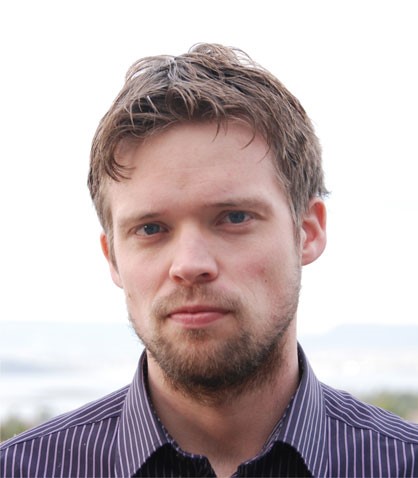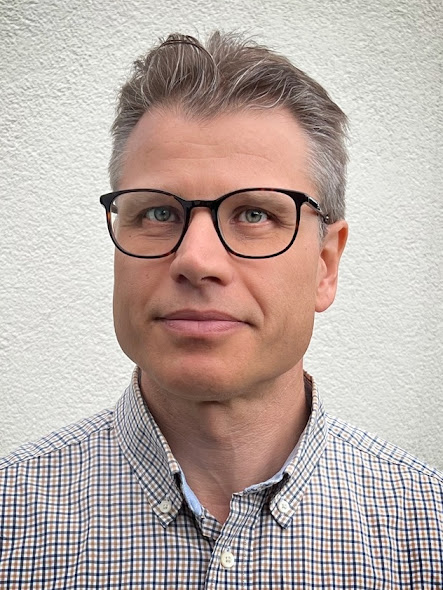Tidligere arrangementer - Side 3
João Inácio:
The field of low-dimensionality magnetism has developed into an active area of solid-state physics, attracting both theoretical and experimental researchers. Due to the vast array of theoretical tools, there is a large effort to develop a full theoretical understanding of one-dimensional (1D) systems. A large part of this interest is due to nonequilibrium dynamics, where steady-state transport is a generic example.
Many physically relevant 1D models are Bethe-ansatz integrable, such as the spin-1/2 XXZ-model and the Fermi-Hubbard model, but computing transport coefficients still poses a great challenge. Moreover, little is currently known about transport properties of non-integrable models, such as the spin-S XXZ-model or ladder spin systems.
Omid Mirmotahari: For feedback processes to be enhanced, students need both appreciation on how feedback can operate effectively and strategies to use feedback within the curriculum. Several studies that examined feedback exchanged during student peer-review process have shown some challenges regarding students’ confidence in their own knowledge to perform assessment.
It has also been found that, due to students’ negative perception of their own level of competence, they have limited confidence in their fellow students assessing their assignment. Lack of clarity about assessment criteria and standards are a source of anxiety for many first-year university students.
Maria Vetleseter Bøe: We need students to engage in the learning activities that work. However, many students resist active learning activities and believe they learn more from traditional lectures.
We have studied how students’ motivation interacts with different learning activities, using focus group data from Norwegian physics students.
The findings suggest that students develop forms of motivation that promote learning in active learning situations when they feel competent, either through mastery, perceived learning, or comparison with peers, and that relatedness to a community of learners often helps enable development of such motivation.
Sakarias Frette: The standard model is the most accurate theory to date, with incredible precision measurements done at multiple detectors. It has however some shortcommings, not being able to explain phenomena such as the hierarchy problem, gravity, dark matter, etc.. Additional theories have been put forward to try to cover these issues, but for now, it has yielded no luck.
The strategy until recently has been to take such a model, and do a targeted search, resulting in large exclusion plots and no new physics. This is effective and fast for a single model, but very biased, and takes a lot of time if you want to try on 100 og 1000 models.
My thesis will instead try to apply a semi unsupervised technique to separate out anomalous data such that we can reduce the uninteresting SM background and focus on possible new physics that might be hidden in the data. The data analysis model used is an autoencoder.
Ben Zwickl from Rochester Institute of Technology is back an even week:
This is an in-progress project, and I’m looking forward to an interactive discussion with lots of questions and feedback!
Our team has conducted 16 interviews with scientists from chemistry, physics, biology, and mathematics. Each interview delves into important tasks that incorporate computation as part of doing research and/or teaching.
Henning V. Myhrehagen, Karl Henrik Fredly, and Hannah Christine Sabo are working on separate research projects in Tor Ole Odden’s research group at CCSE. Their projects address computation/programming in different parts of physics education. Here are the abstracts of the three lightning talks they will give:
To many, chatbots represent a challenge to academic integrity. However, what if instead of having teachers assess AI-written texts, we’ll have AI assess students? The talk will be an exploration and discussion on how existing and coming technologies opens a door to personalized learning.
Lurer du på hva slags prosjekter du kan søke på? Er du nysgjerrig på hva kollegaer har gjort av prosjekter på emner, program, undervisning, lærings-/fagmiljø? Vi tar en Real Prat for å dele erfaringer og for inspirasjon til å søke.
Niklas Karlsen: How do we prepare pre-service teachers to teach the use of programming in a subject-specific context? Should they first learn programming independently of subjects? How do they navigate the challenges related to the learning and teaching of programming? How can programming be integrated into subjects?
This ODD seminar is a continuation of the previous discussion on computational literacy. For those of you who did not read out previous abstract:
Within the past decade, computation has become increasingly prevalent in school standards and curriculum across the world. One framework, computational thinking, has arisen as the dominent framework in educational settings.
Physics education at university level aims to equip students with the necessary skills to take diverse careers paths successfully and adapt to demands of a 21st century society rapidly and effectively. We consider that this can only be achieved by incorporating research-based education innovations that have equity, diversity and inclusion at their heart. In this talk I will present a design of interactive lectures that contribute to a more equitable, diverse and inclusive classroom environment. This goes hand in hand with the design of alternative assessments such as collaborative exams.
Collaborative exams not only can measure the previously gained learning, but also can be an optimal opportunity to produce new learning while reducing exam anxiety. We developed an inclusive approach for collaborative exams adjusting the design to the individual learning requirements of the students. In addition, we encouraged students to become active participants in the exam format by incorporating student-generated content.
In BIOS1100 we noticed that many of the errors students make are abstraction errors (not working at the correct abstraction level or translating incorrectly between levels of abstraction), and there seems to be some evidence of this in the research literature as well.
One way to approach this as an instructor (experts often unconsciously work on several levels of abstraction simultaneously) is to be explicit about which abstraction level we’re working at and when we make a switch – not only to further students’ understanding of the subject matter, but also to teach abstraction as a concept.
Geir Kjetil Sandve:
To teach introductory programming, one of the first choices one will face is which programming language to use. What criteria to use as a basis for this choice is however not obvious. I will briefly present some characteristics of the languages Java, Python and R that in my opinion influences their suitability for learning programming. This will be followed by an open discussion phase, where I hope that those attending would chime in with their experiences with learning or teaching programming to people from different backgrounds.
Quantum Computing: Machine Learning with Emphasis on Quantum Boltzmann Machines
Studies of Quantum Dots using Neural Networks and Coupled Cluster
Heather J. Lewandowski:
Quantum sensing, quantum networking and communication, and quantum computing have attracted significant attention recently, as these quantum technologies could offer significant advantages over existing technologies.
In order to accelerate the commercialization of these quantum technologies, the workforce must be equipped with the necessary knowledge and skills.
Through a study of the quantum industry, in a series of interviews with 21 U.S. companies carried out in Fall 2019 and from a survey administered to 57 companies through the Quantum Economic Development Consortium (QED-C) in Fall 2020, we describe the types of activities being carried out in the quantum industry, profile the types of jobs that exist, and describe the skills valued across the quantum industry, as well as in each type of job
Welcome to a new Computational Science seminar. This coming Friday, we have the pleasure of having Lars Nordbryhn, who has, since 2018, been the Norwegian focal point for IBM's Quantum Computing program. Attached there is a poster to promote the event. Feel free to share it with whomever you feel would be interested.
Since the format for the talk might be slightly different than usual, there is no specific title/abstract this time.
Electrostatics in Mesoscale Simulations of Biological Membranes using the Hybrid Particle-Field Approach
Presentation (pdf)
Within the past decade, computation has become increasingly prevalent in school standards and curriculum across the world. One framework, computational thinking, has arisen as the dominent framework in educational settings.
However, computational thinking is a difficult concept to operationalize and has many different, conflicting definitions.
Another conceptualization of how students learn computation, computational literacy, presents a more straightforward definition. Computational literacy breaks computational skills into three pillars: material (programming-related), cognitive (translating between material and programming aspects), and social (communicating around computation and results).
First, we will present an introduction to the computational literacy framework. We will then have a discussion around computational literacy, its tranlsation to different fields, its affordances and constraints, and its potential uses in research and teaching settings.
Hannah Sabo and Fridjof Gjengset
Evaluating the Phase Behaviour of Silica Modeled by the Vashishta Potential Using Free Energy Methods
Nowadays, since almost anyone can post on social media, a strict distinction between source and consumer is no longer evident. As a consequence we are exposed to an exponential growing flood of misleading information produced by an uncontrollable crowd of often clueless creators. Although it is well understood that the spread of misinformation leads to fatal consequences, it seems impossible to manually sort dangerous content from the sheer volume of data published on a daily basis.
Natural language processing is widely used to automatically classify suspicious content. Here, the strategy is to create manually labeled training sets and train classifiers to detect the content of interest.
The TEAM-program is an educational intervention to provide team training for first-year medical and other healthcare students. The aim of the program is two-fold:
(1) To build trust and team skills among the students in order to develop an inclusive and collaborative learning environment.
(2) To prepare the students for their future roles as leaders, communicators and collaborators in an increasingly more complex healthcare system.
The core element is a two-day team seminar, inspired by the Program Seminars at the MN-Faculty, UiO, and the Learning-Team Retreat, at Perelman School of Medicine, UPenn.
The program is based on a step-wise, research-based model for building well-functioning teams, where each step is implemented through specific activities.
The development and execution of the program is facilitated by near-peer mentors, who follow their designated learning teams through the first year. The educational intervention is systematically evaluated and involves several research projects. Here I will present the program, share what we have learned so far and discuss future developments.
Studying Place Cell Formation and Remapping in an Artificial Neural Network Model
This week we have the pleasure of having Helga Bodahl Holmestad, Sigurd Holmsen and Øystein Høistad from SINTEF.
Helga is a senior researcher at SINTEF (with a PhD in particle physics) while Sigurd and Øystein are working on their master of science thesis with supervisors from SINTEF, using machine learning and AI.
They will talk about research and job possibilities at SINTEF (in particular summer jobs with deadline coming up soon for summer 2023, of interest to many of you) as well as topics for Master of Science projects and other job possibilities.
Helga and Øystein will focus on machine learning applied to real life projects (in particular in connection with civil engineering and large construction plans) while Sigurd will present a project on machine learning applied to learning physical laws.
